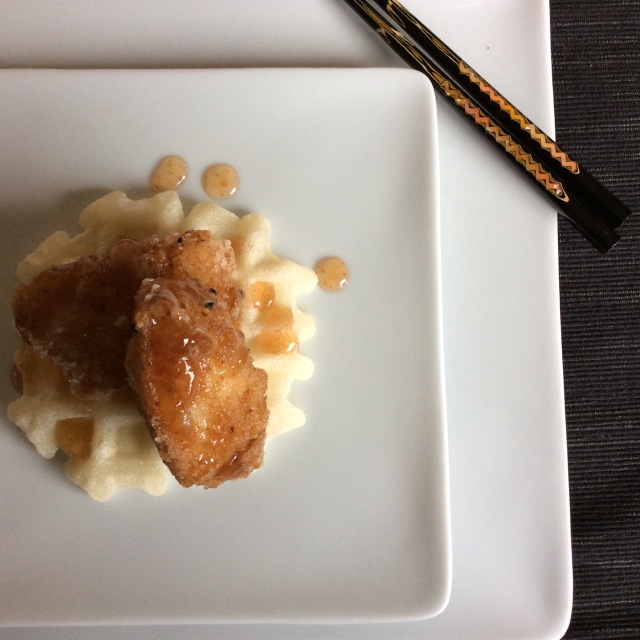
Well, this is a shocker – I haven’t posted anything for about a year. In my defense (excuses, excuses), I’ve been fairly busy lately. I mostly spent the past summer & autumn working on my buddy’s food truck, and some other friends opened a ramen shop in December, and I’ve been occupied with working there. On a related note, if you’re in my town, you can pop by the shop and see The Mighty Sumo in action, AND get a tasty bowl of noodles. Win win.
Anyhow, one of my fondest memories of my childhood is sitting at my grandmother’s kitchen table and stuffing my pudgy little face with mochi. Obaa-san’s version was pretty simple; pieces of mochi soaked in a mixture of shoyu and sugar, but damn – it was good.
As I got older, I discovered that mochi had other applications, such as various confectionary treats, and even ice cream. I still prefer the way my grandmother did it, though. Nostalgia is my middle name. Well, actually my middle name is James, which is far easier to spell.
A while back, my friend Carmen threw a photo up on Instagram of something she called a “mochi waffle”; needless to say, I was intrigued. At first, I figured I would cobble together a waffle using sweet rice flour, which can also be used to make mochi. It was a pretty good waffle, and it tasted a little like mochi, but after a confab with Carmen, she mentioned that her original intent was to create a product with a soft, gooey interior like mochi, but with a crispy exterior like one would find on a waffle.
After hearing that, I flexed the muscles of my Google-Fu, and learned of something called a “moffle”, which is simply blocks of cooked mochi placed into a waffle iron.
If you’re not familiar with mochi, there is a fairly involved process in making it; basically you need a team of men with big-ass mallets to pound the crap out of cooked mochi rice (the mochi in that video is green because something was added to it for color; it will be used to make the confectionary treats mentioned above).
Due to process involved, mochi was something that I regarded as a treat, but that may also have something to do with the fact that we only visited the grandparents once a year for the most part. Also, since those visits occurred at New Year’s, and since mochi is one of the osechi-ryori, or traditional New Year’s dishes, it was always present in great quantities during my visits.
Or maybe it was just because Obaa-san knew that I was going to eat a metric crapload of the stuff.
While I quite often enjoy hitting things with large, blunt objects, the traditional method of producing mochi was never really an option for me. I remember Obaa-san and all the other little old ladies talking about mochi making machines when I was a kid, but they were (and still are!) fairly expensive. I also have issues with single purpose kitchen appliances, which puts me at odds with a great number of Japanese devices, lemme tell ya.
About 10 years ago, however, I stumbled across a method for cooking mochi in a microwave, and everything changed. I was able to indulge my mochi craving whenever I wanted to, and believe me, I wanted to. A lot. It’s a pretty simple process – wash 2 cups of mochi rice (also known as Japanese sweet rice) as you would any other type of rice, then soak it for an hour, drain the water, and throw it in a blender with another cup of water (if you own a Vita-Mix, so much the better). Once blended, pour it into a microwave safe dish, nuke it for 10 minutes or so, and BOOM!!! You have mochi. With that in mind, instead of using the microwave, cooking the mochi, and doing a “moffle”, I figured I would just pour the mixture into my waffle iron.
Yeah, sometimes I’m a bloody genius. I ended up with the crispy exterior and gooey interior that Carmen was looking for. I also added a little bit of raw sugar, because waffle. In retrospect, I’ll probably eliminate that addition in the future, as I prefer a savory mochi over a sweetened one.
Since I had the waffle, I decided to pair it with my karaage for a Japanese version of chicken & waffles. And, due to all the hanging out I’ve been doing with Michelin star chefs lately, I whipped up an umeboshi (pickled plum) syrup to drizzle over the whole thing.
















